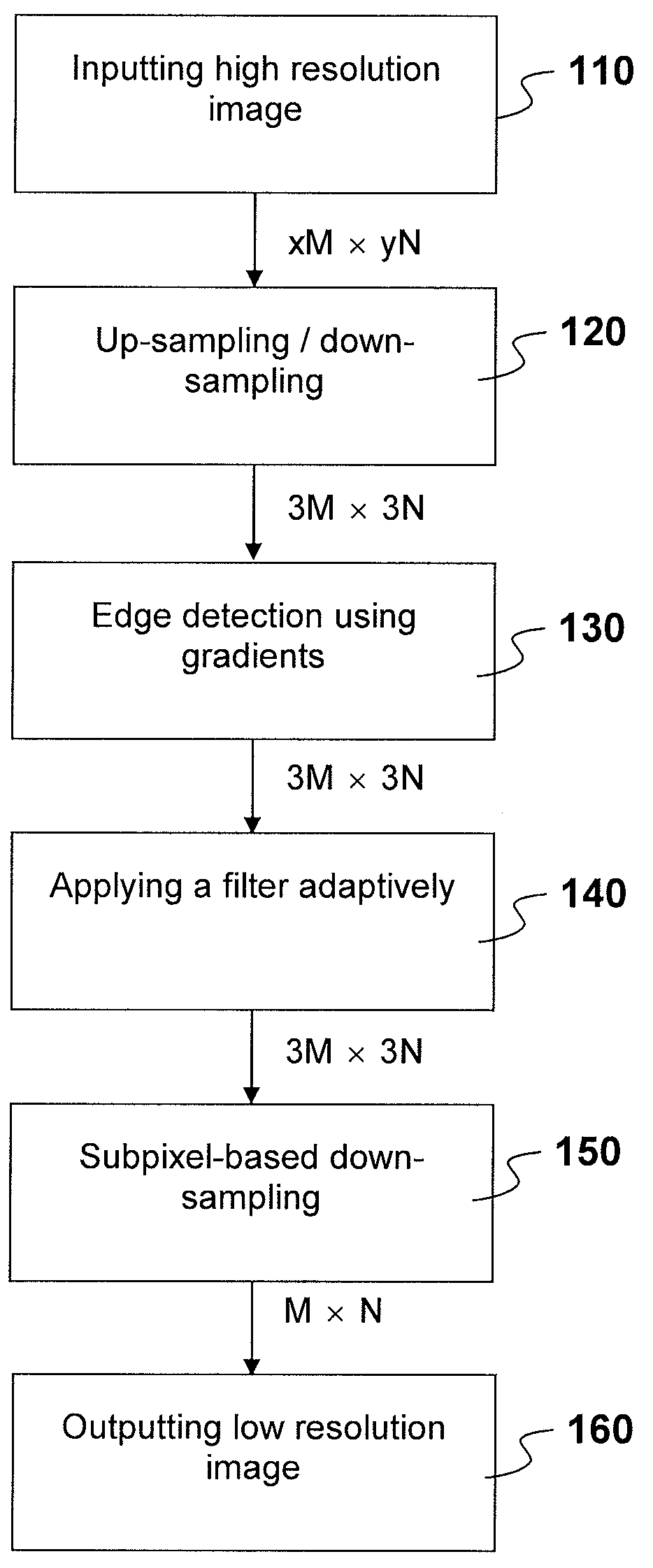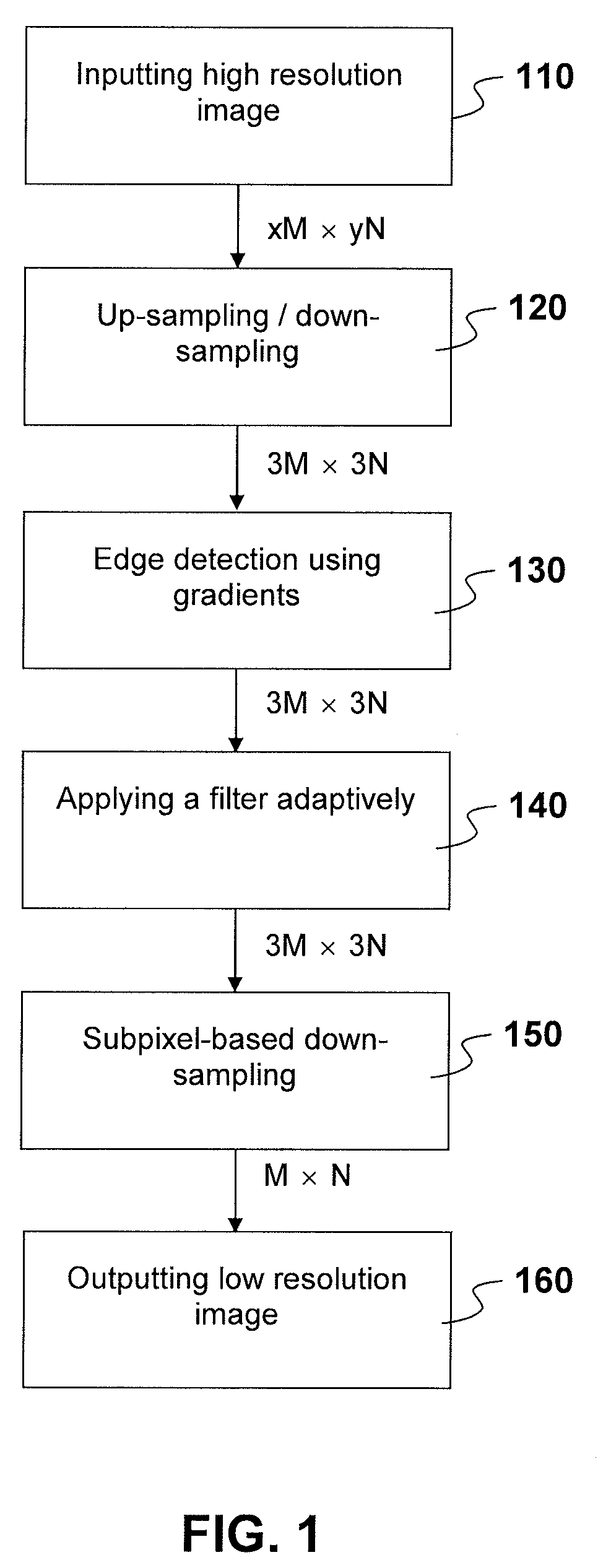Method and apparatus for subpixel-based down-sampling
- Summary
- Abstract
- Description
- Claims
- Application Information
AI Technical Summary
Benefits of technology
Problems solved by technology
Method used
Image
Examples
Embodiment Construction
[0019]FIG. 1 shows a flowchart of how subpixel-based down-sampling in the claimed invention is performed in an illustrative embodiment. In an embodiment, the desired size of an image is M×N, having M pixels in a horizontal direction and N pixels in a vertical direction. The original size of an image is xM×yN, whereas x and y are real numbers which result in either multiples or fractions of M and N.
[0020]In an embodiment, a high resolution image is input in inputting step 110. Subsequently, in sampling step 120, the xM×yN image is processed by either up-sampling or down-sampling or both to generate a 3M×3N image. In alternate and equally foreseeable embodiments, slightly different dimentions such as (3M+1)×(3M+1), or (3M+2)×(3M+2), or even (3M+1)×(3M−2) are equally implementable. In edge-detection step 130, the edges in the 3M×3N image is identified which may or may not use gradient. The edge direction is also determined. In an adaptive filtering step 140, different filters are appli...
PUM
 Login to View More
Login to View More Abstract
Description
Claims
Application Information
 Login to View More
Login to View More - R&D
- Intellectual Property
- Life Sciences
- Materials
- Tech Scout
- Unparalleled Data Quality
- Higher Quality Content
- 60% Fewer Hallucinations
Browse by: Latest US Patents, China's latest patents, Technical Efficacy Thesaurus, Application Domain, Technology Topic, Popular Technical Reports.
© 2025 PatSnap. All rights reserved.Legal|Privacy policy|Modern Slavery Act Transparency Statement|Sitemap|About US| Contact US: help@patsnap.com



